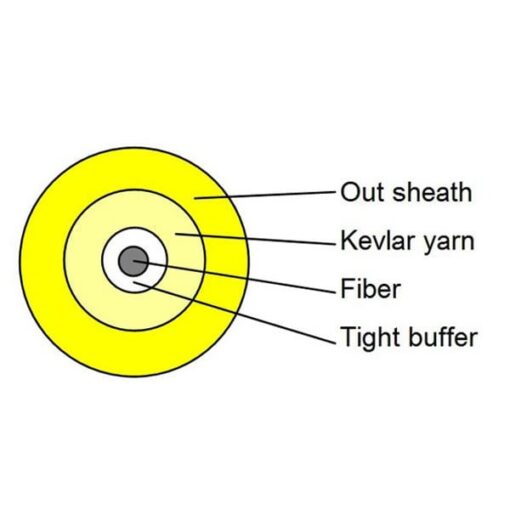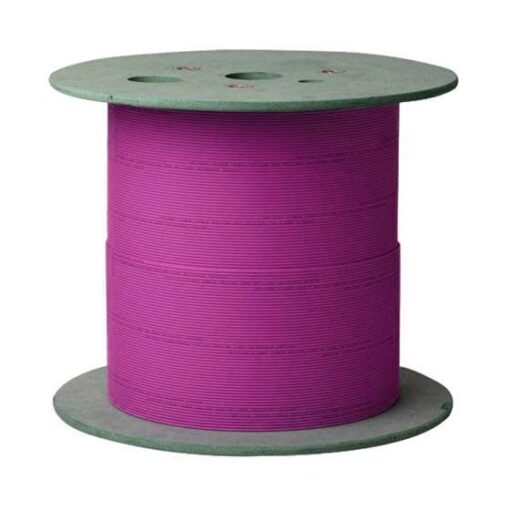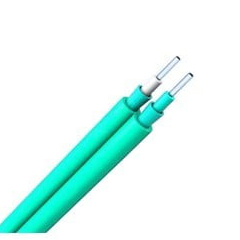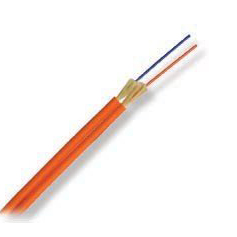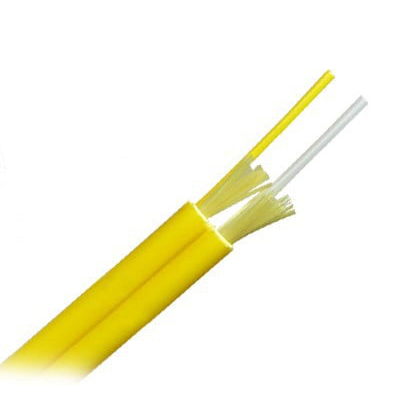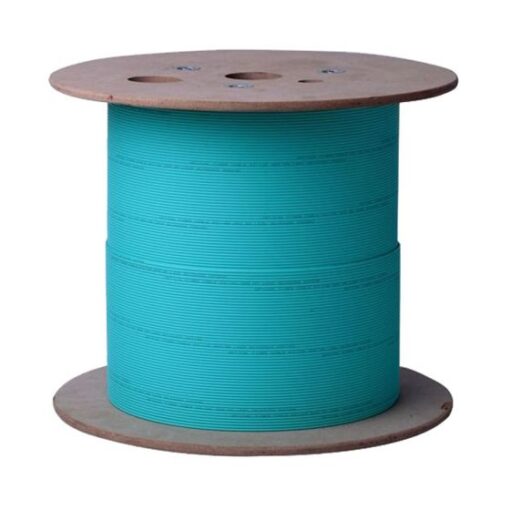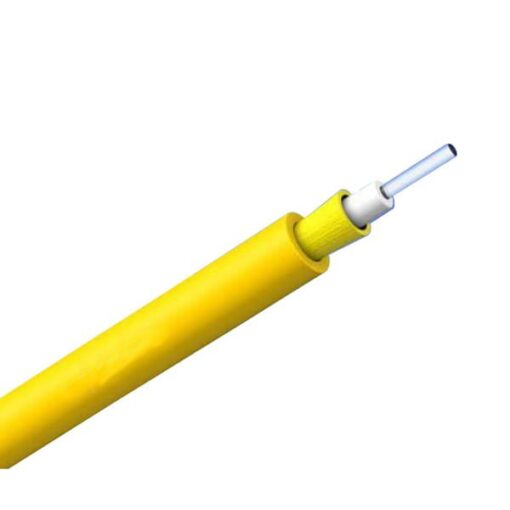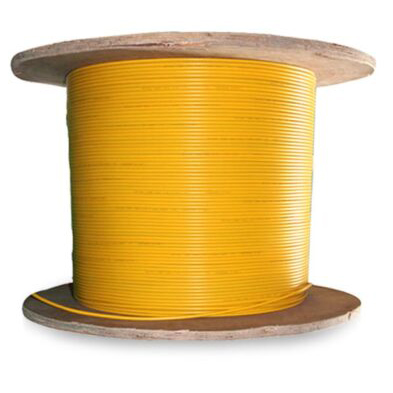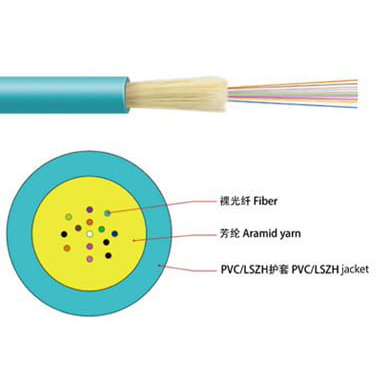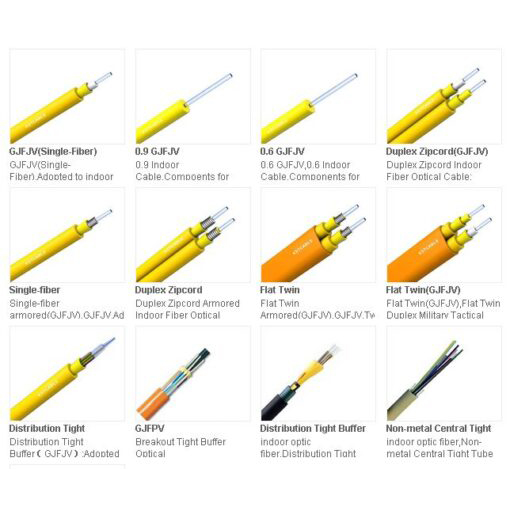Click to open expanded view
OM3 Multimode Fiber Optic Cable – 10G, 50/125µm Simplex, Tight Buffer, LSZH Indoor Rated (Aqua)
High-performance OM3 multimode simplex fiber optic cable (50/125µm) designed for 10 Gigabit Ethernet indoor applications up to 300 meters. Features a tight buffer construction for easy termination, a round LSZH (Low Smoke Zero Halogen) jacket for safety, and is ideal for data centers and enterprise networks. Available in custom lengths.
10G OM3 50/125µm Multimode Simplex Tight Buffer Indoor Fiber Optic Cable is engineered to deliver reliable, high-speed data transmission for demanding indoor network environments. This laser-optimized multimode fiber supports 10 Gigabit Ethernet applications over distances up to 300 meters, making it a perfect choice for data centers, enterprise backbones, and Local Area Networks (LANs). The simplex (single fiber) design with a 900µm tight buffer allows for straightforward connectorization, while the LSZH jacket ensures enhanced fire safety in enclosed spaces. This cable is typically supplied in the industry-standard aqua color for easy OM3 identification.
Key Features:
10 Gigabit Performance: Optimized for 10 Gb/s data rates, supporting applications like 10GBASE-SR up to 300 meters.
OM3 Laser-Optimized Multimode Fiber (LOMMF): 50/125µm core/cladding diameter, specifically designed for use with 850nm VCSELs (Vertical Cavity Surface Emitting Lasers).
High Bandwidth: Effective Modal Bandwidth (EMB) of ≥2000\geq 2000≥2000 MHz·km at 850nm ensures signal integrity for high-speed transmission.
Low Attenuation: Typical attenuation of ≤3.0\leq 3.0≤3.0 dB/km at 850nm and ≤1.0\leq 1.0≤1.0 dB/km at 1300nm, minimizing signal loss.
Simplex Construction: Contains a single optical fiber, suitable for one-way data transmission or used in pairs for duplex communication.
900µm Tight Buffer: Provides robust protection for the optical fiber and facilitates direct termination with standard fiber optic connectors.
LSZH (Low Smoke Zero Halogen) Jacket: In the event of a fire, the LSZH jacket emits minimal smoke and no toxic halogen compounds, enhancing safety for personnel and equipment.
Round Cable Design: Standard 3.0mm outer diameter (as per your specifications image) offers a balance of durability and flexibility for easy installation in conduits, trays, and raceways.
Indoor Rated: Designed specifically for deployment within buildings and controlled environments.
Industry Standard Color: Aqua jacket for easy identification of OM3 fiber type.
Benefits:
Reliable High-Speed Connectivity: Ensures dependable performance for critical network infrastructure.
Future-Proofing: Supports current 1GbE and 10GbE standards and provides a pathway for future network upgrades.
Enhanced Safety: LSZH materials significantly reduce risks in fire situations, crucial for populated indoor areas.
Ease of Installation & Termination: The tight buffer and round design simplify handling, stripping, and connectorization processes, reducing installation time and costs.
Versatile Application: Suitable for a wide range of indoor networking scenarios.
Cost-Effective Solution: Provides a balance of high performance and affordability for OM3 deployments.
Applications:
Data Centers and Storage Area Networks (SANs)
Enterprise networks and campus backbones
Local Area Networks (LANs) for inter-building or intra-building connectivity
High-speed connections to servers, switches, and routers
Telecommunication closets and distribution frames
Applications requiring 10 Gigabit Ethernet over multimode fiber
Used to create custom-length simplex or duplex patch cords and pigtails.
5. Key Specifications Explanation & Handling Guide:
Understanding Key Specifications:
Fiber Type (OM3): Essential for ensuring compatibility with your transceivers and network equipment. OM3 is aqua-colored and supports 10GbE up to 300m.
Bandwidth (EMB ≥2000\geq 2000≥2000 MHz·km @ 850nm): This high bandwidth capacity is crucial for transmitting 10Gbps signals with minimal dispersion and signal degradation over the specified distance.
Attenuation (≤3.0\leq 3.0≤3.0 dB/km @ 850nm): Lower attenuation means less signal loss per kilometer, allowing for longer reach or more connections within the link budget.
Cable Diameter (3.0mm for simplex): Affects conduit fill, bend radius, and connector compatibility.
Jacket (LSZH): Critical for safety compliance in many indoor installations, especially in public spaces or areas with sensitive equipment.
Installation & Handling Best Practices:
Observe Bend Radius: Do not bend the cable tighter than its specified minimum bend radius (typically 10-15 times the cable diameter during installation, and a smaller radius once installed). Exceeding this can damage the fiber and degrade performance.
Avoid Excessive Pulling Tension: Adhere to the cable’s maximum pulling tension specifications to prevent fiber strain or breakage during installation. Use appropriate pulling grips and lubricant if needed.
Protect from Physical Damage: Avoid crushing, kinking, or impacting the cable. Route it away from potential hazards.
Proper Stripping and Termination: Use appropriate fiber optic stripping tools for the tight buffer and jacket. Follow standard termination procedures for the chosen connectors (e.g., LC, SC). Ensure clean, polished end-faces.
Cleanliness: Keep fiber end-faces and connector interfaces clean throughout the installation and termination process. Dust and contaminants are major causes of network issues.
Temperature Limits: Install and operate the cable within its specified temperature ranges (Installation: -20°C to +60°C, Operation: -20°C to +70°C).


